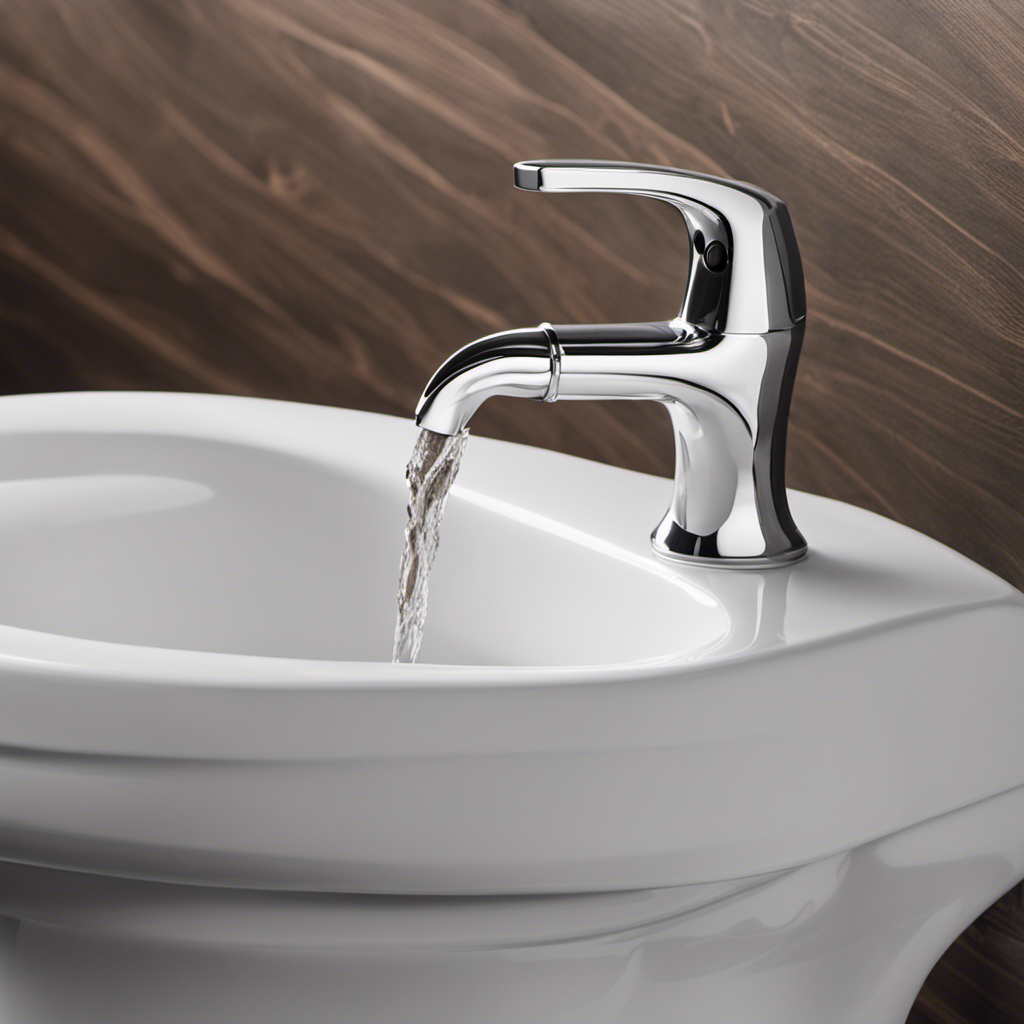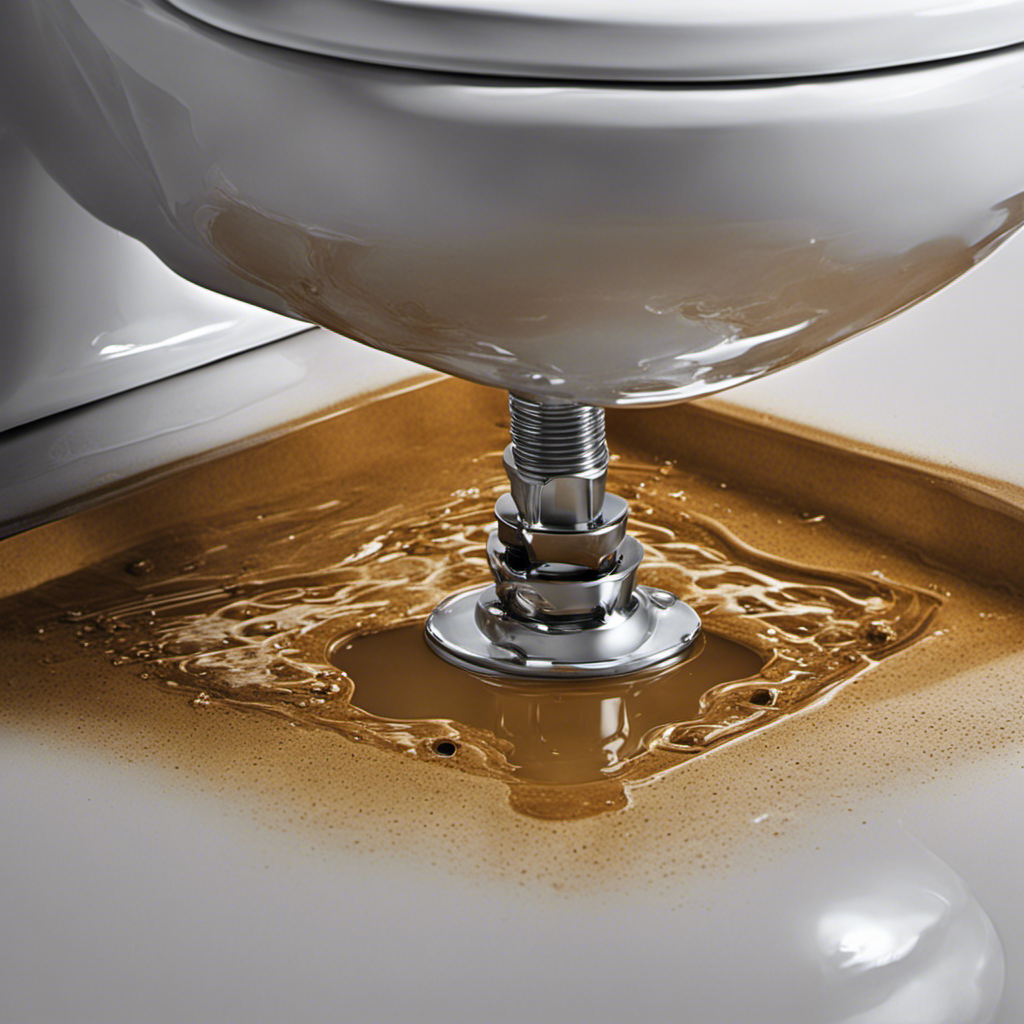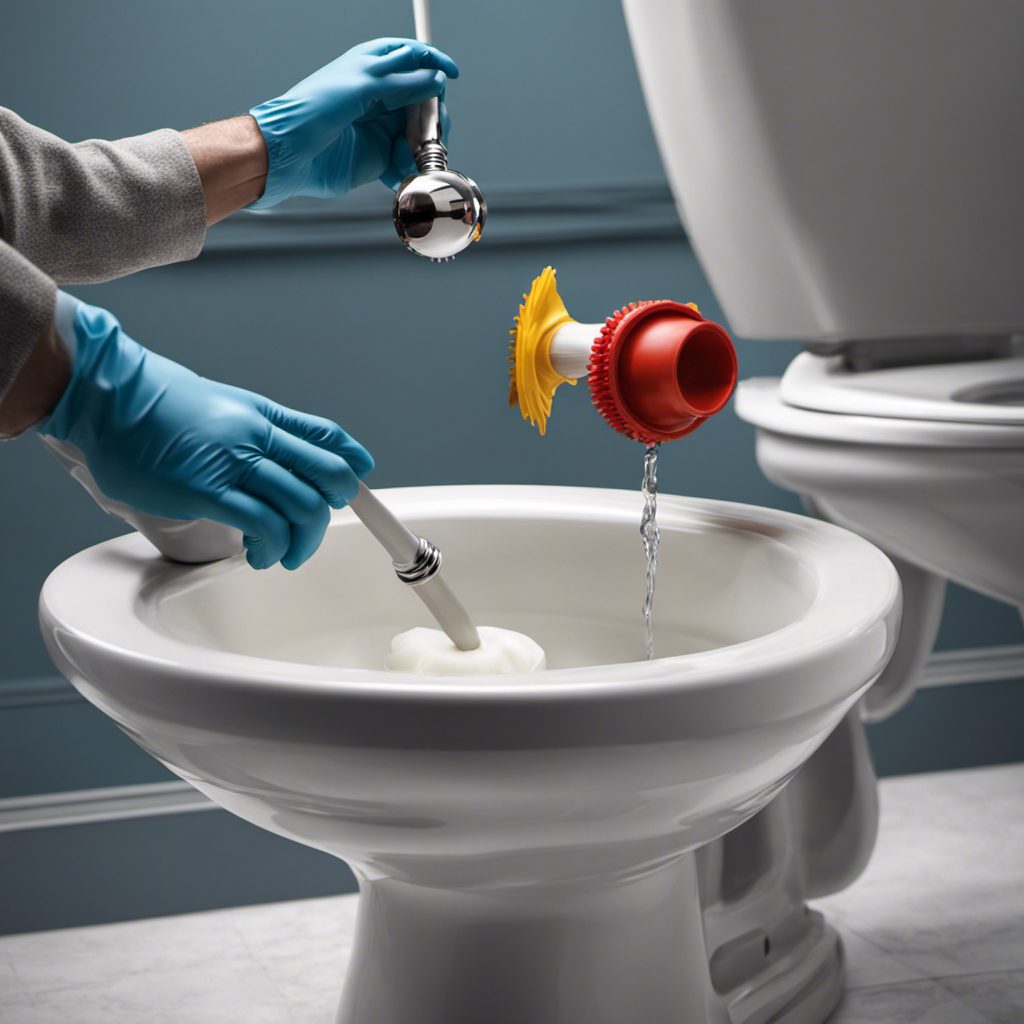Did you know that a running toilet can waste up to 200 gallons of water per day? If you’re tired of the constant noise and high water bills, I’ve got you covered.
In this article, I’ll show you step-by-step how to fix a toilet that keeps running. By following these simple instructions, you’ll be able to identify and resolve the problem in no time.
So let’s get started and put an end to that annoying running toilet once and for all.
Key Takeaways
- The flapper is a common cause of a running toilet.
- Adjusting the chain length and inspecting the flapper for cracks or wear can help fix the issue.
- Shutting off the water supply and checking the fill valve for leaks or damage is necessary.
- Regular maintenance of the flapper, including cleaning and replacement if needed, can prevent water waste and keep the toilet running smoothly.
Identifying the Problem
First, check if the flapper is properly sealing the tank. This is one of the most common toilet problems that can cause the toilet to keep running. The flapper is the rubber valve at the bottom of the tank that controls the water flow. If it is not sealing properly, water will continuously leak into the toilet bowl, causing it to run.
To troubleshoot this issue, remove the tank lid and inspect the flapper. Make sure it is not cracked or worn out. Adjust the chain length if needed, ensuring that it is not too loose or too tight. If the flapper is damaged, you can replace it with a new one.
Once you have identified and fixed the flapper problem, you can move on to shutting off the water supply to the toilet.
Shutting Off the Water Supply
To stop the water supply, simply turn off the valve located behind the toilet. This is usually a small knob or lever that you can turn clockwise to shut off the water flow. Once the valve is closed, the water supply to the toilet will be cut off, allowing you to work on fixing the issue without any water running.
Here are some additional tips for adjusting water pressure and troubleshooting leaks:
-
Check the water pressure regulator: If the water pressure is too high, it can cause the toilet to run continuously. Adjust the regulator to lower the pressure if needed.
-
Inspect the fill valve: A faulty fill valve can cause water to continuously flow into the toilet tank. Check for any leaks or signs of damage and replace if necessary.
-
Look for leaks in the flapper valve: A worn-out or misaligned flapper valve can cause water to leak from the tank into the bowl. Inspect the valve and replace if needed.
-
Examine the supply line: Check for any leaks or cracks in the supply line that connects the toilet to the water source. Replace if necessary.
-
Consider replacing the flush valve: If all else fails, a faulty flush valve may be causing the running toilet. Replace the flush valve to resolve the issue.
Now that you have shut off the water supply, let’s move on to the next step of checking the fill valve.
Checking the Fill Valve
Now that the water supply is shut off, let’s take a look at the fill valve.
The fill valve is responsible for controlling the water level in the toilet tank. If your toilet keeps running, it could be due to a faulty fill valve.
To check the fill valve, start by removing the tank lid. Look for a float attached to a metal rod. This float regulates the water level. If the water level is too high, the float may need adjusting. Simply bend the metal rod downwards to lower the water level.
If adjusting the water level doesn’t solve the issue, the fill valve may be dirty and need cleaning. To clean the fill valve, turn off the water supply and remove the valve cap. Rinse the cap and valve thoroughly, removing any debris.
Reassemble the valve and turn the water supply back on.
Adjusting the Fill Valve
If the water level in the toilet tank is too high, you can adjust the fill valve by bending the metal rod downwards. This will lower the water level and stop the toilet from running constantly. Here are some alternative solutions you can try to fix a running toilet:
-
Check the flapper: Ensure that the flapper is properly sealing the flush valve. If it is worn or damaged, replace it.
-
Adjust the chain length: If the chain connecting the flapper and the flush handle is too long, it can get tangled and prevent the flapper from closing properly.
-
Clean the fill valve: Mineral deposits can build up in the fill valve, affecting its proper functioning. Clean the valve to ensure smooth operation.
-
Check the water pressure: High water pressure can cause the toilet to run continuously. Consider installing a pressure-reducing valve.
-
Perform preventive maintenance: Regularly inspect and clean your toilet to prevent any issues from arising in the first place.
Inspecting the Flapper
When it comes to toilet maintenance, one important component to inspect is the flapper. If you’re having issues with your toilet not flushing properly or constantly running, it may be due to a faulty flapper.
In this discussion, we will explore the various flapper replacement options available and discuss some common problems you may encounter with your flapper.
Flapper Replacement Options
There are several flapper replacement options available to fix a toilet that keeps running. Here are some options to consider:
-
Rubber flapper: This is the most common replacement option and is readily available at hardware stores. It is affordable and easy to install.
-
Adjustable flapper: This type of flapper allows you to adjust the water level in your toilet tank, helping with water conservation.
-
Dual-flush flapper: This innovative option provides two flushing options – one for liquid waste and one for solid waste. It helps save water by using less for liquid waste.
-
Flapper with a float: This type of flapper includes a float that helps regulate the water level in the tank, preventing overflows.
-
Flapper with a chain: Some flappers come with a chain that connects to the flush handle, providing a more reliable and consistent flush.
Common Flapper Problems
Now that we know about different flapper replacement options, let’s talk about common flapper problems and how to fix them.
Flappers can become worn out or damaged over time, leading to issues like leaks or a toilet that keeps running. To prevent these problems, regular flapper maintenance is essential.
Inspect the flapper for any cracks or signs of wear, and clean it regularly to remove any mineral deposits or debris. If you notice a leak or the flapper isn’t sealing properly, there are a few flapper repair techniques you can try.
Adjusting the chain length, cleaning the flapper seat, or replacing the flapper entirely are all effective ways to fix common flapper problems. Remember, maintaining and repairing your flapper can help keep your toilet running smoothly and prevent water waste.
Replacing the Flapper
When it comes to replacing the flapper in your toilet, there are a few simple steps you can follow.
First, turn off the water supply to the toilet and drain the tank completely.
Then, remove the old flapper by detaching it from the chain and unscrewing any bolts or screws holding it in place.
Finally, install the new flapper by attaching it to the chain and securing it with the necessary hardware.
Common flapper problems include leaks, improper sealing, and deterioration over time.
Flapper Replacement Steps
To fix your toilet that keeps running, you’ll need to start by turning off the water supply. Once the water is off, follow these steps to replace the flapper:
- Remove the tank lid and locate the flapper.
- Disconnect the flapper chain from the flush handle.
- Unhook the flapper from the overflow tube.
- Take the old flapper to the hardware store to find an exact match.
- Install the new flapper by hooking it onto the overflow tube and reattaching the chain to the flush handle.
Flapper maintenance tips:
- Clean the flapper regularly to remove any debris or mineral buildup.
- Check the chain length to ensure proper flapper operation.
- Adjust the flapper if it is not sealing properly.
- Replace the flapper if it is worn or damaged.
- Troubleshoot flapper issues by checking for leaks or phantom flushes.
Common Flapper Problems
One common problem with flappers is that they may not seal properly, causing water to continuously leak into the toilet bowl. To prevent this issue, regular flapper maintenance is essential.
Start by checking the flapper for any signs of wear or damage. If you notice any cracks or tears, it’s time to replace it. Additionally, clean the flapper and the surrounding area to remove any dirt or debris that may affect its sealing ability.
Another sign of a faulty flapper is a toilet that keeps running even after flushing. If you hear water running constantly or notice water trickling into the bowl, it’s likely a flapper problem.
Testing and Troubleshooting
Check if the flapper valve is properly sealing the flush valve, as this could be causing your toilet to keep running. To test this, follow these steps:
- Remove the tank lid and locate the flapper valve.
- Flush the toilet and observe if the flapper closes completely after the water has drained.
- If the flapper doesn’t seal properly, it may need to be adjusted or replaced.
Check the chain connecting the flapper to the flush handle. It should have some slack but not be too loose.
Make sure the water level in the tank is not too high or too low, as this can also cause a running toilet.
Regular toilet maintenance is crucial to prevent these issues. Proper toilet installation and regular inspection of the flapper valve can help avoid a constantly running toilet.
Frequently Asked Questions
How Do I Know if My Toilet Is Running?
I can easily tell if my toilet is running by listening for a continuous sound of water. To stop a running toilet, I can troubleshoot the issue by checking the flapper, fill valve, and water level.
Can I Fix a Running Toilet Without Shutting off the Water Supply?
Sure, I can fix a running toilet without shutting off the water supply. One option is to adjust the float valve or replace the flapper. These temporary fixes can help until a permanent solution is found.
What Are the Common Causes of a Running Toilet?
When a toilet keeps running, it’s usually due to a faulty float valve or a loose chain. You’ll hear a continuous running sound. To fix it, adjust the float or tighten the chain.
How Do I Adjust the Water Level in the Toilet Tank?
To adjust the water level in the toilet tank, I troubleshoot and find the water level adjustment valve. By turning it clockwise, I can decrease the water level, ensuring efficient flushing.
Can I Replace the Flapper Without Calling a Professional Plumber?
Yes, I can replace the flapper without calling a professional plumber. It’s a simple task that falls under regular toilet maintenance. I just need to follow the instructions and use the right tools.
Conclusion
So there you have it, a step-by-step guide on how to fix a toilet that keeps running. By following these simple instructions, you can save money on your water bill and prevent unnecessary wastage.
Did you know that a running toilet can waste up to 200 gallons of water per day? That’s enough to fill a swimming pool! So don’t let this problem go unnoticed, take action and fix your running toilet today.










